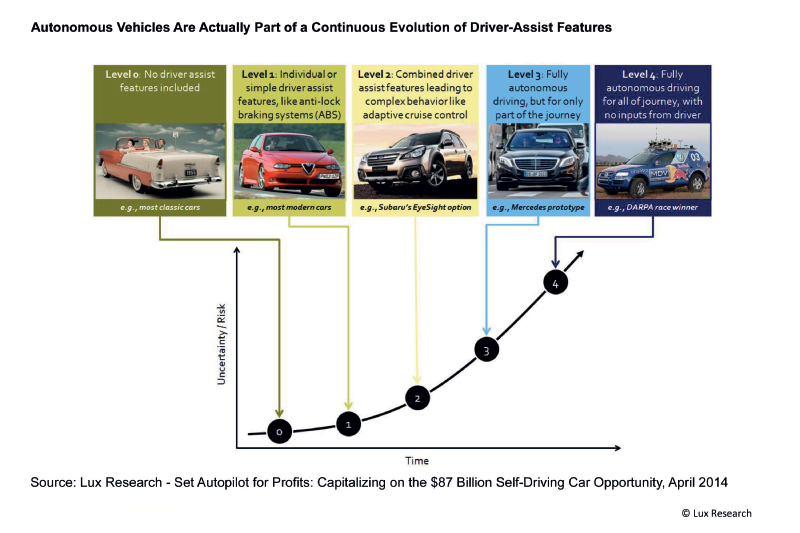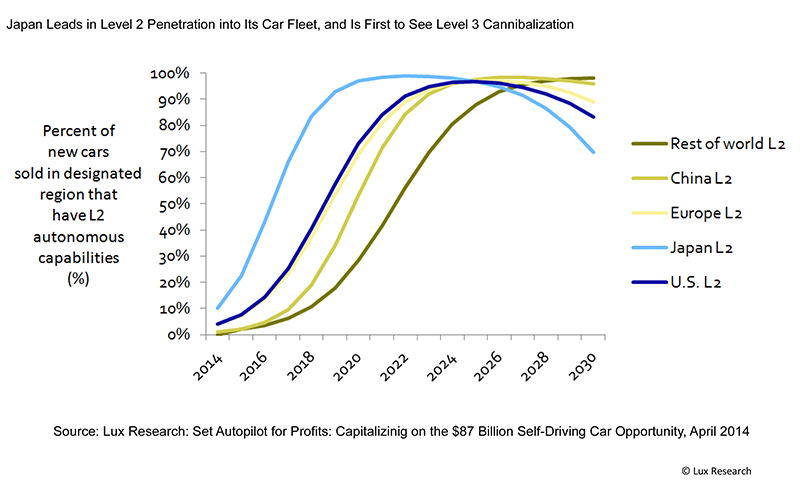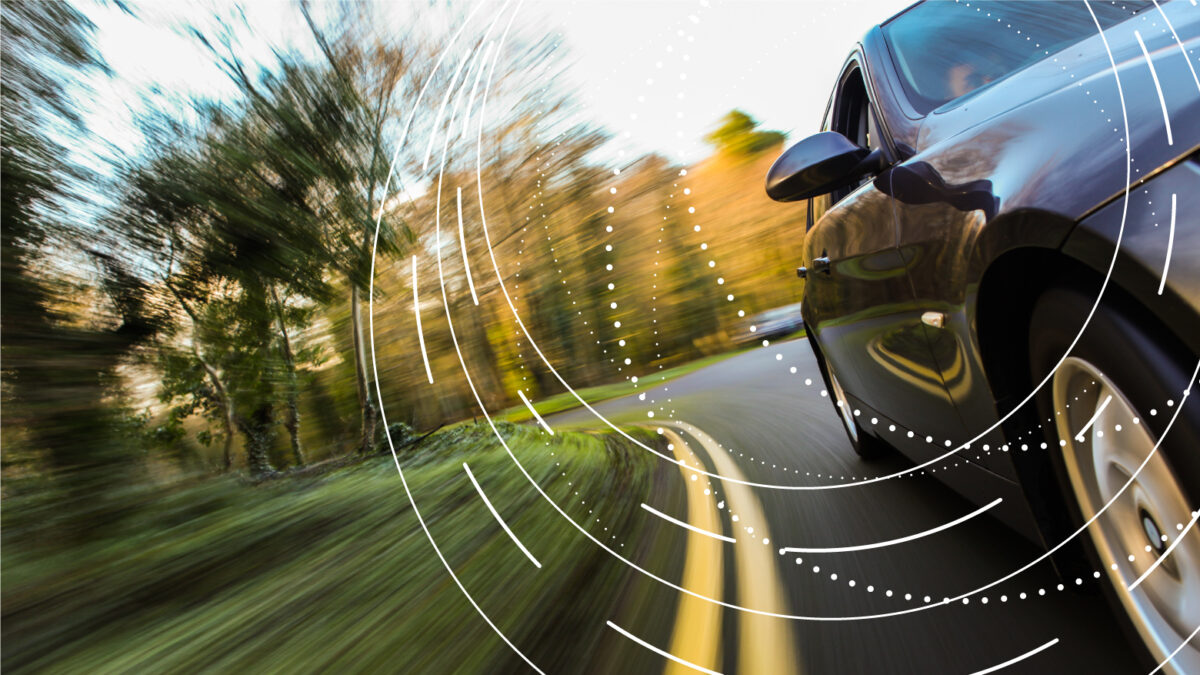The hype around the supposed autonomous car revolution is gaining momentum daily. However, improvements in automation continue to be incremental, and how vehicle manufacturers go about ensuring that each implemented feature is safe, robust, and reliable will play a large role in determining the future of driverless cars.
Rather than a sudden jump to full autonomy, the emergence of autonomous capabilities for vehicles will be a gradual one. As time progresses, the level of vehicles’ advanced driver-assist features will increase in complexity and capabilities. When considering the gradual move towards full autonomy, it’s useful to use the US National Highway Traffic Safety Administration (NHTSA) standard of car automation levels, where level 3 (L3) and level 4 (L4) denote partially driverless and fully driverless operation, respectively. While there is growing support for the SAE standard, which adds an extra level (totalling six levels vs. NHTSA’s five), providing granularity around human intervention depending on the selected drive mode, the NHTSA standard is appropriate when considering most driver assist features today.
As cars progress from L1 to L4 there will be major safety concerns when considering how drivers will interact with autonomous vehicles. Two problems in particular will be human reliance on driver assist features, and the passing of controls back and forth between the human and the car. The initial problem of reliance on driver assist features will soon become apparent as L2 cars gain global market share. L2 technologies, such as lane sensing and blind spot detection, are already standard features in many cars today.
Over the next ten years, the automotive market will see a dramatic shift from Level 1 to Level 2 autonomy in new cars sold. Level 2 will increase from a small fraction of new cars sold today – about 3% globally – to 57% in 2020. However, a look at Lux Research’s global adoption predications for L2 cars shows that in the near term, the global penetration rates of L2 technology will be concentrated in countries like Japan and the US.

One major concern with driver assist features is that they may cause driver complacency. Once a driver begins to fully trust a feature like blind spot detection, they rarely double check to see if the indicator accurately reflects the situation. As these features become more common and drivers grow more reliant on them, there is a potential threat to safety when an L2 system fails, or the driver operates cars which lack L2 technology, such as when they travel to foreign countries.
Keeping driver engagement and enabling safe passing of controls will continue to be a safety concern for autonomous vehicles going forward. If developers can achieve Level 4 full autonomy, then cars will no longer need steering wheels or pedals: humans will effectively be cut out of the driving process altogether, a solution that Google is attempting. However, on the road to this goal, the industry will first go through Level 3 – partial autonomy, where humans will hand over driving duties to cars in certain conditions, and when those conditions become too overwhelming, cars will hand the controls back to the driver. The question of how to make sure the driver is still engaged enough to be able to resume their duties is unanswered. Even once the driver does begin to focus back on the task at hand, it takes time, especially as he or she is by definition being pulled back into a complex situation that the car cannot deal with.
A thought-provoking conversation is whether or not L3 ever makes sense. There is a clear value proposition for L2 features, such as collision avoidance, but L3 is tenuous, with the known complications associated with handing controls back and forth to the human. An analogy here is that of airline pilots, who, even though they are highly trained and whose job is predicated on staying alert at all times to provide safe transition between pilot and autopilot, remain susceptible to distraction. This motivated the adoption of the FAA’s Sterile Cockpit Rule, which enacted strict constraints on pilots to limit any distraction that could prevent safe operation of the aircraft, including conversation and eating. Contrast that with the typical car driver today, where eating, chatting, and, unfortunately, texting remain commonplace. Coupled with the fact that drivers would have implicit permission to stop paying attention when in driverless mode, the potential for accidents rises quickly.

One solution is to innovate past the problem, generating interest around unconventional automotive technologies like wearable electronics that could monitor drivers and communicate with the vehicle, enabling some kind of stimulus – such as a haptic device – to nudge the driver to attentiveness. Human distraction and reaction pose a very difficult problem, and the solution may ultimately be an autonomous, driverless car that operates in limited-use cases, such as at low speed on predictable routes.Taking the human driver out of the picture may, in the end, be the correct solution, but it only solves one of the many challenges in the way of a driverless future.



